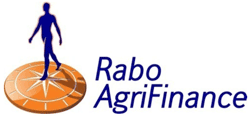
 While U.S. milk prices have fallen considerably in the last 8 months, a surplus of milk on the international market is likely to squeeze U.S. producer margins further as 2015 progresses, according to the Rabobank Food & Agribusiness Research and Advisory (FAR) group's Q2 2015 Dairy Quarterly report.
While U.S. milk prices have fallen considerably in the last 8 months, a surplus of milk on the international market is likely to squeeze U.S. producer margins further as 2015 progresses, according to the Rabobank Food & Agribusiness Research and Advisory (FAR) group's Q2 2015 Dairy Quarterly report."While we are well off the record level achieved in late 2014, producer milk prices in the U.S. are still 15 percent and 57 percent higher than those presently being paid to dairy farmers in the Netherlands and New Zealand," says Rabobank Global Dairy Strategist and report lead author Tim Hunt. "Sustaining these kinds of premiums is going to get tougher in coming months, as the impacts of an oversupplied international market filter back home."
The price of key dairy commodities fell further in international markets in Q2, and now sit at the lowest levels since 2009. After falling marginally in Q1, production in key export regions rose above prior years in April as weather improved and EU quotas were removed. In the face of ongoing weakness in China and Russia, other buyers stepped in to take most of this product, though buy-side stocks are now large and supply-side stocks are also showing signs of growing. Weaker commodity markets have fed through to the farmgate in regions like NZ and the EU, pushing milk prices towards or even below breakeven for producers.
The U.S. dairy market has held up better than the international market to date. U.S. wholesale market pricing for NFDM and whey eased in Q2, with product trading in line with international pricing. Yet U.S. cheese and butter prices actually rose and remained at a significant premium to prices in international markets in mid-June, as strong domestic demand for these products, barriers to import and the CWT program kept the market tight.
"The U.S. dairy market actually grew faster than those of most of the BRIC economies in Q1," says Hunt. "Employment growth, higher wages and lower gas prices helped boost U.S. cheese sales by 4.5 percent in Q1 in YOY terms. Butter sales are also well up, while the contraction in fluid milk slowed."
Nonetheless, 2H 2015 is likely to prove a challenging period for U.S. milk producers.
Rabobank expects the international market to remain oversupplied through the coming six months as supply growth continues to outstrip demand, as China continues to rebalance and buyers end their recent stock build programs.
In this environment, sustaining the current premium for the US domestic market through 2H 2015 is likely to prove an impossible task, according to Rabobank.
"The higher prices in place in the U.S. market are encouraging much greater production growth here than in most regions of the world," notes Hunt. "At the same time, exports are falling as processors try to direct more product to the more profitable domestic market, and imports are rising as fast as they can within the constraints of U.S. trade barriers."
This is likely to boost local supply availability faster than the domestic market can soak up, and weigh down on U.S. dairy prices.
"We expect butter and cheese prices to come in considerably below the current levels suggested by the CME forward curve in Q3 and 4, as the international milk glut feeds its way into the U.S. market," says Hunt. "Class III milk could easily be priced at below USD15/cwt by Q4, driving the income over feed costs below USD7/cwt for the average U.S. farmer."
"At global level, we still have more milk than market right now," says Hunt, "and unfortunately U.S. producers are unlikely to get through the next 6 months as easily as current futures pricing suggests."
The full report is available to media upon request. Please contact Sarah Kolell, with Rabo AgriFinance.
6.18.2015